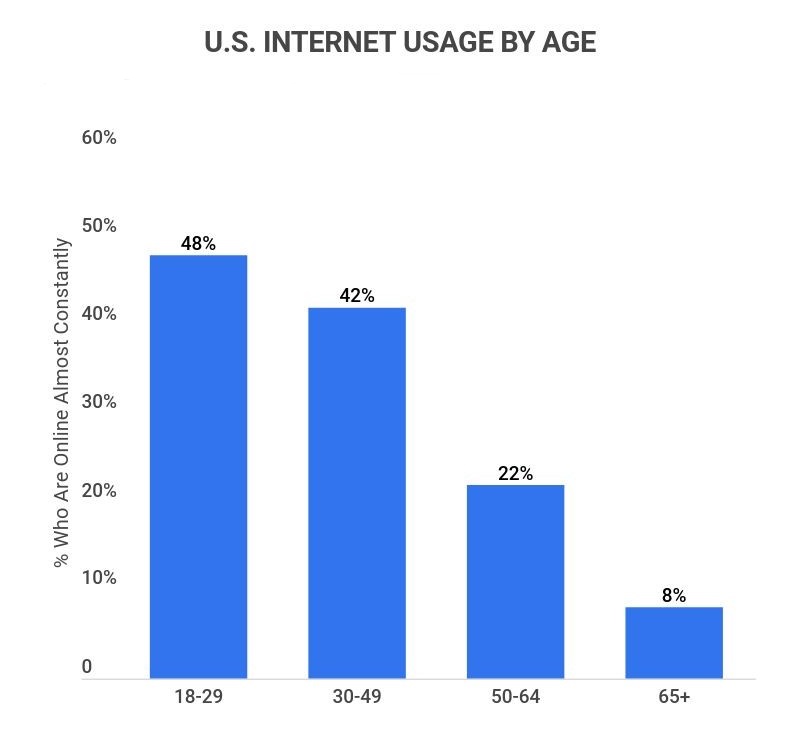In today's increasingly digital world, access to computers and the internet has become essential for nearly every aspect of life. From education and employment to healthcare and social interaction, the ability to connect online can determine one's opportunities and quality of life. Yet, disparities in access remain prevalent, impacting various demographics and communities differently. This chart shows the percentage of individuals who have or do not have access to computers and the internet, painting a picture of the ongoing digital divide.
Understanding the statistics surrounding access to computers and the internet is crucial for policymakers, educators, and community leaders. This data aids in identifying areas that require targeted investments and initiatives aimed at improving digital literacy and connectivity. With increasing reliance on technology, the urgency of addressing these disparities cannot be overstated. The question remains: how can we ensure that everyone has equal access?
In this article, we will explore the various facets of access to computers and the internet, examining the statistics, the implications of limited access, and potential solutions to bridge the gap. Whether through governmental initiatives, community programs, or technological advancements, we must strive to create a world where everyone is connected.
What Are the Key Statistics on Access to Computers and the Internet?
Access to computers and the internet. This chart shows the percentage who have access and who do not, providing a clear visual representation of the current landscape. Here are some critical statistics:
- Approximately 90% of households in urban areas have internet access, compared to only 60% in rural areas.
- Among low-income families, only 50% possess a computer, highlighting significant inequality.
- Access to high-speed internet varies dramatically, with 70% of affluent neighborhoods connected compared to just 30% in economically disadvantaged areas.
How Does Lack of Access Impact Education?
Access to computers and the internet. This chart shows the percentage who are unable to complete homework or participate in online classes due to lack of connectivity. The impact on education is profound:
What Are the Consequences for Students?
Students without access to technology face several challenges, including:
How Are Schools Responding to the Digital Divide?
Many educational institutions are taking proactive measures to address these disparities:
- Providing laptops and tablets to students in need.
- Establishing community internet access points.
- Offering digital literacy programs for students and parents alike.
What Role Does Government Play in Ensuring Access?
Governments have a crucial role in promoting access to computers and the internet. This chart shows the percentage of federal and state initiatives aimed at improving connectivity:
What Programs Are in Place?
Various programs have been implemented to help bridge the digital divide:
- The Federal Communications Commission (FCC) offers subsidies for low-income families to access the internet.
- Local governments are increasing funding for public Wi-Fi hotspots in underserved areas.
- Initiatives like the ConnectHome program aim to provide broadband access to public housing residents.
What Can Communities Do to Improve Access?
Communities can play a significant role in enhancing access to computers and the internet. This chart shows the percentage of community-led initiatives that have successfully increased connectivity:
How Can Community Organizations Help?
Community organizations can implement various strategies to improve digital access:
- Establishing computer labs for public use.
- Organizing workshops to teach digital skills.
- Partnering with local businesses to provide funding and resources.
What Role Do Libraries Play?
Libraries have evolved into key players in the fight for digital access, offering:
- Free access to computers and high-speed internet.
- Educational programs focused on digital literacy.
- Safe spaces for community members to learn and connect.
What Are the Future Trends in Digital Access?
As technology continues to evolve, so will the approaches to increasing access to computers and the internet. This chart shows the percentage of anticipated trends that could shape the future of digital connectivity:
How Will Emerging Technologies Impact Access?
Advancements in technology may offer new solutions to improve access:
- Expansion of 5G networks could enhance connectivity in rural areas.
- Innovative satellite internet solutions are being developed to cover remote locations.
- Community-owned broadband networks are gaining traction as a sustainable model for local access.
What Can Individuals Do to Help?
Individuals can contribute to closing the digital divide by:
- Volunteering at local organizations focused on digital literacy.
- Donating old computers or devices to those in need.
- Advocating for policies that support equitable access to technology.
The conversation surrounding access to computers and the internet is more critical than ever. As we have seen, this chart shows the percentage of individuals who are still without access, highlighting the urgent need for collective action. By working together—governments, communities, organizations, and individuals—we can bridge the digital divide and ensure that everyone has the opportunity to thrive in our increasingly connected world.



ncG1vNJzZmixn6PAtr7IZqWeq6RjsLC5jq2pnqaUnruogY6ampydo6h6tbuMnKamqKWpsrO%2FjJqlnWWknbJutc2tnKumlal6tbTIrGScoJGnwW6%2Fx6iurGWknbJuvMSrmp6mpJa0pnnWoaZnoKSiuQ%3D%3D